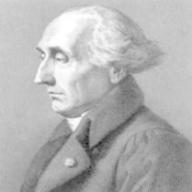There are two questions I want to ask.
Consider a pitot tube measuring a flow of water, P(s) and P(t) denote the static pressure and the total pressure of two points at the same level that below two open tubes.
1) Since static pressure P(s) is acted by fluid at rest, why static pressure P(s) can also be measured from moving fluid? Now the static pressure P(s) in this case is then higher than that when the fluid is at rest about pgh. Why?
2) Consider the tube that measuring the static pressure of water. Whats wrong if I put two points which are at the same axis but have different positions of a tube (say, at the highest level of the water and that just at the mouth of the tube) into the Bernouli's equation ?
If I do so, I can obtain an equation: (Po+pgh) + (1/2)pv^2 = Po + pgh, where Po, v and p are atmospheric pressure, velocity of the flowing water and density of the water respectively.
更新1:
I know that there are some restrictions in using the Bernouli's equation but I can not thoroughly realize. Please tell what the misconception is.

